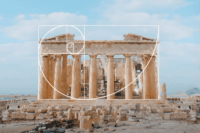- Home
- Articles
- Architectural Portfolio
- Architectral Presentation
- Inspirational Stories
- Architecture News
- Visualization
- BIM Industry
- Facade Design
- Parametric Design
- Career
- Landscape Architecture
- Construction
- Artificial Intelligence
- Sketching
- Design Softwares
- Diagrams
- Writing
- Architectural Tips
- Sustainability
- Courses
- Concept
- Technology
- History & Heritage
- Future of Architecture
- Guides & How-To
- Projects
- Interior Design
- Competitions
- Jobs
- Store
- Tools
- More
- Home
- Articles
- Architectural Portfolio
- Architectral Presentation
- Inspirational Stories
- Architecture News
- Visualization
- BIM Industry
- Facade Design
- Parametric Design
- Career
- Landscape Architecture
- Construction
- Artificial Intelligence
- Sketching
- Design Softwares
- Diagrams
- Writing
- Architectural Tips
- Sustainability
- Courses
- Concept
- Technology
- History & Heritage
- Future of Architecture
- Guides & How-To
- Projects
- Interior Design
- Competitions
- Jobs
- Store
- Tools
- More

Water damage is an ever-present risk for art collections, no matter where they’re displayed—museums, private residences, or bustling galleries.
From a burst pipe in winter to an unexpected roof leak during a heavy storm, even small amounts of water can cause irreversible harm to irreplaceable paintings, sculptures, and historical artifacts.
The consequences range from visible staining and warping to hidden mold growth that may only become apparent after significant loss has occurred.
This article explores the unique vulnerabilities art faces when exposed to water.
You’ll discover practical prevention strategies, real-world risks, and essential response plans every collector or institution should have in place to protect their treasures from water-related disasters.
Table of Contents
ToggleFirst Response: Addressing Water Risks with Professional Help
When it comes to protecting art collections, speed is everything. Even a small leak can escalate quickly, putting irreplaceable pieces at risk.
As soon as you detect water where it shouldn’t be, call in a professional. Expert plumbers don’t just stop the immediate flow—they diagnose underlying issues that could threaten your collection again down the line.
Services like https://shawplumbingservices.com/drain-cleaning-spokane/ specialize in identifying hidden vulnerabilities. They can spot blockages, failing joints, or aging pipes long before disaster strikes.
This isn’t just about fixing what’s broken—it’s about building a foundation of trust and proactive care. Reliable plumbing professionals help you stay ahead of potential water threats with scheduled maintenance, routine inspections, and rapid response when problems do arise.
Pro Tip: Schedule annual plumbing checks—especially after harsh weather or renovations—to catch risks early and avoid costly surprises.
Museums and private collectors alike benefit from developing relationships with responsive experts. It means peace of mind knowing your art is protected not only from today’s visible leaks but also from tomorrow’s hidden hazards.
Key Takeaway: Professional intervention isn’t an extra expense; it’s essential insurance for safeguarding your art against unpredictable water emergencies.
Understanding the Vulnerabilities: How Water Damages Art
Water damage isn’t just an inconvenience for art collections—it’s a genuine threat to their survival.
Whether it’s a slow leak or sudden flood, moisture interacts with art in ways that are both immediate and long-lasting.

From priceless paintings to intricate mixed media pieces, every material reacts differently to water exposure.
This complexity is why proactive prevention is essential, not optional, for collectors and institutions alike.
Materials at Risk: Paint, Canvas, Paper, and More
Oil paints can blister or flake when exposed to humidity.
Canvas may stretch, lose tension, or develop stains that are nearly impossible to reverse.
Paper absorbs water quickly—leading to rippling, bleeding ink or pigments, and permanent distortion.
Wooden frames and sculptures swell and crack as they absorb moisture, further endangering the stability of the work.
The very materials that give artworks their character—organic fibers, delicate binders—are also what make them so vulnerable when water finds its way in.
Hidden Threats: Mold, Warping, and Staining
The effects of water aren’t always visible right away.
Mold can develop in hidden layers long before surface growth appears, quietly eroding pigments and weakening canvas fibers beneath the paint.
Warping distorts canvases and paper over time; even subtle changes in shape can affect how an artwork displays or fits its frame.
Water’s Long-Term Impact: Research from the Academy of Fine Arts Vienna (2023) highlights that even minimal, prolonged moisture exposure can cause molecular changes in paints and organic materials. This can lead to hidden damage like mold growth or micro-cracking before any obvious symptoms appear.
The Cost of Inaction
Real-world examples underline just how devastating delayed response can be.
Museums recovering from storm floods have reported total losses of rare manuscripts simply because dampness wasn’t caught soon enough to halt mold spread.
A single undetected pipe leak has rendered valuable paintings unsalvageable due to staining that penetrated deep into their canvas and backing boards.
The aftermath often goes beyond financial loss—it’s the disappearance of cultural history that could’ve been preserved with quicker action or better safeguards in place.
Prevention Strategies for Art Collectors and Institutions
Protecting art from water damage isn’t a one-time fix—it’s an ongoing commitment that blends technology, thoughtful building design, and trained people.
Early detection tools, smart architecture, and clear emergency plans all play a role in keeping collections safe.
Below, we break down best practices that every collector or institution should have on their radar.
Environmental Monitoring and Early Detection
The sooner you catch a leak or spike in humidity, the less likely you are to face devastating losses.
Installing humidity sensors helps spot fluctuations before they lead to mold or warping. Leak detectors placed near vulnerable plumbing and under display cases add another layer of protection—alerting staff immediately if water appears where it shouldn’t.
Don’t forget about regular inspections. Even with technology, nothing replaces a sharp eye checking ceilings, floors, and storage spaces for early warning signs of trouble.
Pro Tip: Log all sensor readings and inspection findings. Patterns can reveal risks before they become emergencies.
Building Design and Drainage Solutions
The right infrastructure is your first defense against water threats. Start with site selection—avoid flood-prone basements or locations with poor drainage history.
Waterproofing walls and floors creates essential barriers. Proper grading outside directs rainwater away from buildings, while roof overhangs help keep galleries dry during storms.
Heritage Water Risk Analysis shows how Mediterranean museums are leading the way by updating drainage systems and environmental controls to resist flooding and humidity spikes. These measures offer actionable guidelines for strengthening your own space against future threats.
Training and Emergency Planning
No plan works without people who know what to do when minutes matter. Train staff on how to use leak detectors, respond to alarms, and move artwork safely if needed.
Create an emergency protocol that covers communication channels, roles during an incident, and fast access to protective materials like plastic sheeting or absorbent pads.
Run regular drills so everyone knows their part—and refine procedures as needed after each exercise or real-world event.
Key Takeaway: A proactive strategy—combining monitoring tech, solid design choices, and practiced teams—is the best insurance against costly water disasters in any art collection.
Responding to Water Emergencies: Recovery and Restoration
Immediate Actions: Containment and Assessment
The first moments after discovering water damage are critical for preserving art collections.
Collectors and staff should act quickly to stop the water source if possible and safely isolate affected areas to prevent further spread.
Use gloves and protective gear to handle artworks, minimizing direct contact with wet or compromised materials.

Carefully assess which pieces have been exposed, documenting their condition with photographs and notes before moving anything.
Prioritize works most at risk—such as paper or canvas—when relocating items to a dry, stable environment for temporary storage.
Working with Conservation Experts
Once immediate threats are contained, engaging professional conservators is essential for successful restoration.
These experts have the knowledge and tools to stabilize materials, control mold growth, and address hidden issues like warping or pigment loss.
Water-Damaged Paper Restoration: Fine Art Restoration Company (2023) details a project where they successfully reversed staining, mold, and warping on water-damaged paper works, demonstrating the importance of professional expertise in saving artworks that seem beyond repair.
The right conservation team can make the difference between permanent loss and complete recovery for treasured pieces.
Documentation for Insurance and Future Prevention
Thorough documentation is vital after a water emergency—not only for insurance claims but also to inform future prevention strategies.
Create detailed records of each affected item, including photos from multiple angles and written descriptions of all observed damage.
This information supports your insurance process and helps identify vulnerabilities within your space or procedures.
A comprehensive incident report becomes a learning tool, guiding improvements in both emergency planning and collection protection moving forward.
Conclusion
Water damage remains one of the most persistent threats to art collections, often striking without warning and causing irreversible harm.
However, proactive planning and swift intervention can make all the difference when disaster strikes.
Investing in environmental controls, regular maintenance, and staff training empowers collectors and institutions to respond effectively to water emergencies.
With the support of conservation experts and a well-prepared response plan, it’s possible to restore damaged works and prevent future losses.
Ultimately, safeguarding art against water damage is an investment in preserving cultural heritage for generations to come.
Trained as an architect and seasoned in the editorial trenches, I turn raw design concepts into compelling narratives that resonate beyond studio walls. My work spans in-depth project spotlights, interviews with visionary designers, and analysis pieces that distill complex technical data into accessible insights. Whether polishing copy for publication or generating original features, I draw on years of practice to ensure every sentence captures architecture’s rigor, poetry, and cultural impact—inviting professionals and enthusiasts alike to see the built environment through a sharper, more inspired lens.
Submit your architectural projects
Follow these steps for submission your project. Submission FormLatest Posts
Balancing Style and Function: Creating Comfortable Spaces Naturally
Creating a space that not only looks good, but also feels comfortable...
How To Choose The Right Chandelier For The Size Of Your Living Room
The right chandelier can transform your living room into a place you...
Space Planning for Industrial Showrooms in Rural Settings
The design of industrial showrooms in rural settings presents unique challenges for...
Efficient Tips To Organize And Protect Items During a Renovation Project
A renovation project can transform a living space, but the process often...












Leave a comment